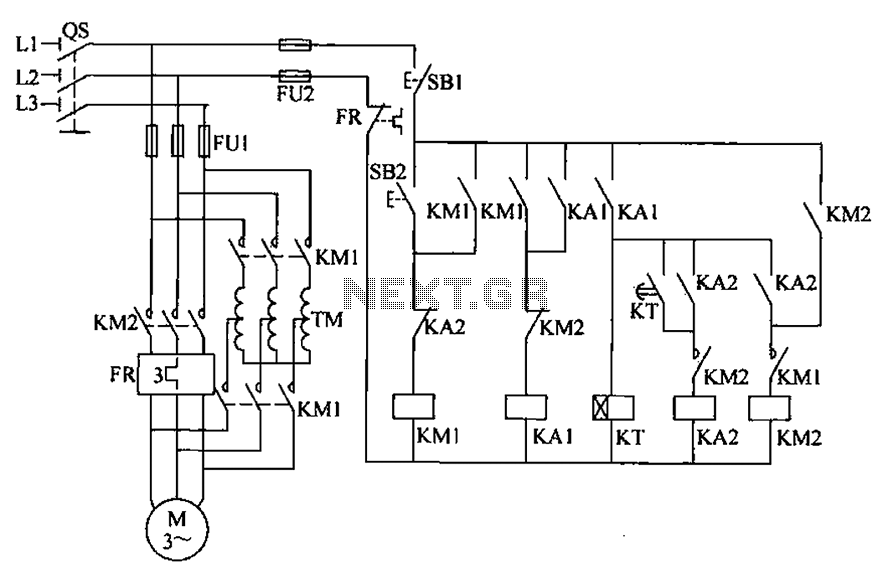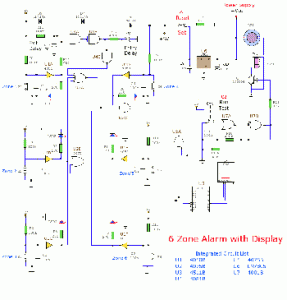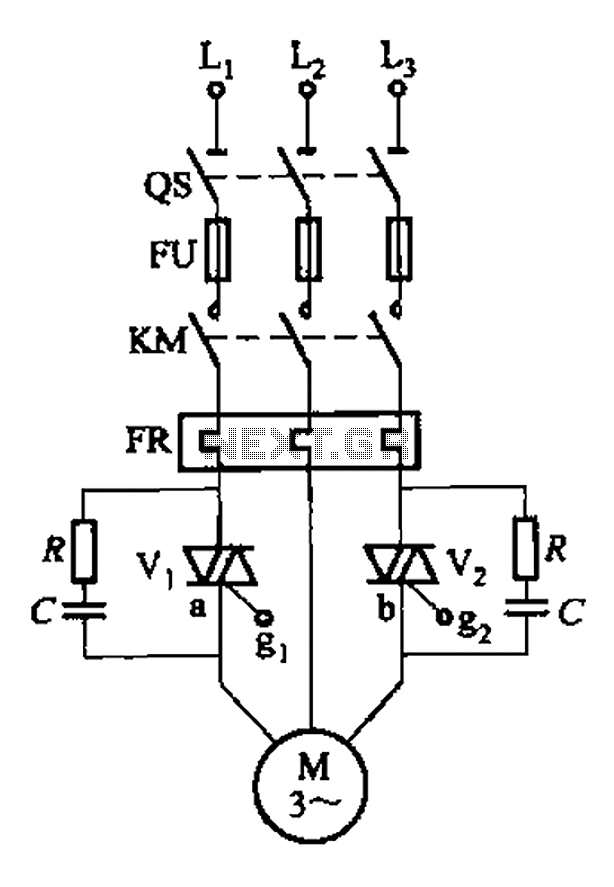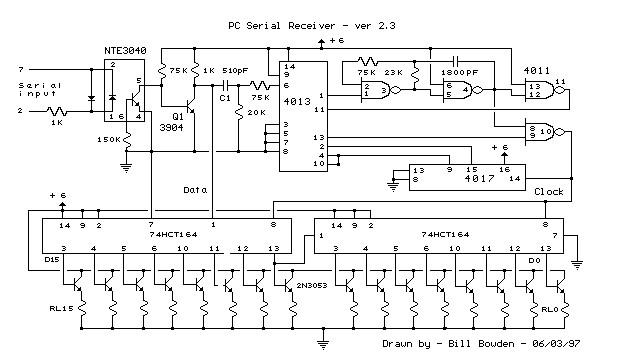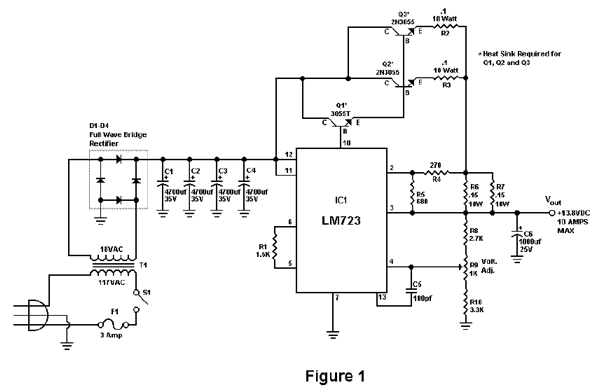
Numeric water level indicator- liquid level sensor circuit diagram with 7 segment display
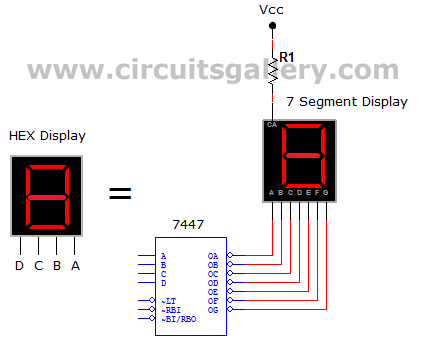
This circuit defines seven levels in a reservoir. The sensed values are connected to an encoder circuit, which consists of a 74148 integrated circuit (IC), functioning as an 8-line to 3-line encoder. The next section features a HEX display, a specialized type of 7-segment display that simplifies usage compared to a standard seven-segment display, as it is pre-decoded. Each hexadecimal digit is displayed when its corresponding 4-bit binary equivalent is received as input, as indicated in the accompanying truth table. If a HEX display is difficult to obtain, an ordinary 7-segment display can be utilized with a decoder driver IC, such as the 7447. The encoded values are then displayed. This circuit is particularly beneficial for various projects. The fourth input (D) of the 7447 can be disregarded since this circuit is designed to encode up to seven levels, corresponding to binary 111, thus making the fourth input unnecessary.
The circuit operates by monitoring the levels of a reservoir and encoding the sensed values into a binary format suitable for display. The 74148 IC encodes up to eight input lines into three output lines, allowing for efficient data representation. The outputs of the 74148 are then connected to either a HEX display or a 7447 decoder driver, depending on availability and project requirements.
In the case of using the HEX display, the 4-bit binary input, which is derived from the sensed levels, directly corresponds to a hexadecimal digit, simplifying the process of visual representation. The HEX display eliminates the need for additional decoding, allowing for a straightforward connection to the encoder outputs.
If opting for the 7447 decoder driver with a standard 7-segment display, the circuit retains its functionality, although it requires the additional step of decoding the binary output. The 7447 converts the binary input into a format that can drive the 7-segment display, illuminating the appropriate segments to represent the encoded value visually. The design acknowledges that the fourth input of the 7447 is not required for this application, as the maximum encoded value is seven (binary 111).
This circuit design is advantageous for projects requiring level monitoring and display, providing a clear and efficient means to visualize data. It is adaptable to component availability while maintaining functionality and clarity in the representation of reservoir levels. Proper attention to the connections and power supply for the ICs and display components is essential to ensure reliable operation.Here we define 7 levels in thereservoir. The sensed values are connected to an encoder circuit. The encoder circuit consist of a 74148 IC, which is a 8 line to 3 line encoder. Next section is the HEX Display` which is a special type of 7 segment display. It is easier to use than the regular seven-segment display because it is already decoded. Each hexadecimal digit is displayed when its 4 bit binary equivalent is received as input, as shown in the truth table below. If it is difficulty to get a HEX Display` you can use ordinary 7 segment display with decoder driver IC 7447.
Hence the encoded values are displayed. This circuit will be really helpful for your project. You can neglect the 4th input (D) of 7447 because we are using this circuit to code up to 7 level, that is upto binary 111. Hence there is no need of the 4th input of 7447. 🔗 External reference
The circuit operates by monitoring the levels of a reservoir and encoding the sensed values into a binary format suitable for display. The 74148 IC encodes up to eight input lines into three output lines, allowing for efficient data representation. The outputs of the 74148 are then connected to either a HEX display or a 7447 decoder driver, depending on availability and project requirements.
In the case of using the HEX display, the 4-bit binary input, which is derived from the sensed levels, directly corresponds to a hexadecimal digit, simplifying the process of visual representation. The HEX display eliminates the need for additional decoding, allowing for a straightforward connection to the encoder outputs.
If opting for the 7447 decoder driver with a standard 7-segment display, the circuit retains its functionality, although it requires the additional step of decoding the binary output. The 7447 converts the binary input into a format that can drive the 7-segment display, illuminating the appropriate segments to represent the encoded value visually. The design acknowledges that the fourth input of the 7447 is not required for this application, as the maximum encoded value is seven (binary 111).
This circuit design is advantageous for projects requiring level monitoring and display, providing a clear and efficient means to visualize data. It is adaptable to component availability while maintaining functionality and clarity in the representation of reservoir levels. Proper attention to the connections and power supply for the ICs and display components is essential to ensure reliable operation.Here we define 7 levels in thereservoir. The sensed values are connected to an encoder circuit. The encoder circuit consist of a 74148 IC, which is a 8 line to 3 line encoder. Next section is the HEX Display` which is a special type of 7 segment display. It is easier to use than the regular seven-segment display because it is already decoded. Each hexadecimal digit is displayed when its 4 bit binary equivalent is received as input, as shown in the truth table below. If it is difficulty to get a HEX Display` you can use ordinary 7 segment display with decoder driver IC 7447.
Hence the encoded values are displayed. This circuit will be really helpful for your project. You can neglect the 4th input (D) of 7447 because we are using this circuit to code up to 7 level, that is upto binary 111. Hence there is no need of the 4th input of 7447. 🔗 External reference
